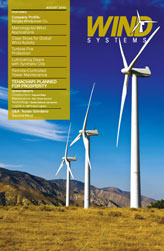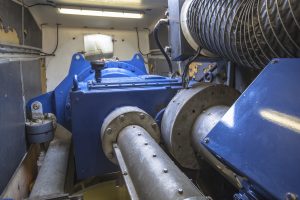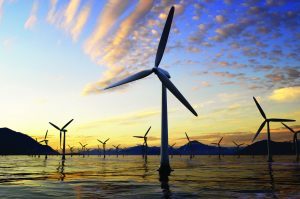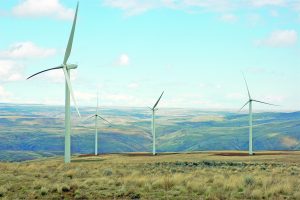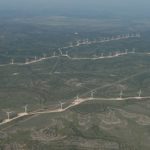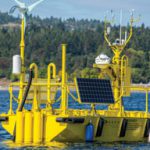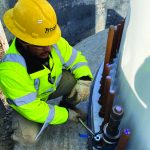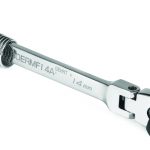As wind turbines continue to grow in size, reports such as the “DOE 20% Wind by 2030” capture the advantages of larger and more technologically advanced rotors and their potential for increasing energy capture without having an adverse effect on turbine capital cost. However, increased rotor size is only beneficial if other system costs are constrained and their design and development is done in such a way that they do not affect the viability, reliability, or the associated logistics. Thus, larger rotors must be able to prohibit excess loads from impacting the turbine. These loads can be divided into two categories:
• In-plane loads caused by gravitational forces on the blades;
• Out-of-plane loads caused by the aerodynamic response to wind inflow.
Additionally, the ability of rotors to adapt to inflow and optimally capture the energy in the wind is vital. To address these challenges research efforts must be focused on several multidisciplinary areas, one of particular interest being wind turbine controls.
A Matter of Control
In order to continue to reduce wind turbine costs, future large multi-megawatt turbines must be designed with lighter-weight rotors, potentially implementing active controls strategies to mitigate fatigue loads while maximizing energy capture and adding active damping to maintain stability for these dynamically active structures operating in a complex inflow environment. Development, evaluation and testing of advanced controls to mitigate fatigue loads caused by complex turbulent inflow is crucial for future designs.
The wind turbine is a highly nonlinear dynamic machine that operates over a large turbulent wind regime. Current conventional designs are limited to linearized models about nominal wind speed operating points that require gain scheduling to transition between each nominal wind speed operating point. Today, commercial machines rely on either classical single-input-single-output (SISO) controllers or state-space multiple-input-multiple-output (MIMO) controllers based on linearized models. While adequate for controlling the “stiff” machines of the past, these methods are not ideal for stabilizing future large multi-megawatt turbines that will experience greater dynamic coupling due to greater flexibility and lower rotor speeds. To meet these future challenges, advanced control methods and paradigms should be pursued to meet multiple control objectives with a single unified control loop, where multiple control actuators and multiple sensors can be used to greatest advantage to reduce fatigue loading, stabilize the complex structure, and maximize power.
Using the full nonlinear dynamical system in a nonlinear/adaptive control design may allow for the potential to capture more energy in below rated-power conditions, efficient transition between below and rated-power conditions, and for above rated-power conditions to mitigate and reduce fatigue loads on turbine components and blades. This results in longer operational life for the wind turbine components (gearboxes, blades, etc.).
Advanced Architecture
Recent technology innovation in rotor technology—including individual blade pitch control, passive bend-twist and sweep-twist coupling (aero-elastic tailoring), and fast-acting active aerodynamic load control—offer the potential for further enhancing turbine energy capture and decreasing turbine cost of energy (COE). There is a significant amount of research domestically and globally that showcase the value of these innovations, and ongoing research in both controls and sensing will provide the operational architecture to make them a reality. Advanced control architectures that fully take advantage of these innovations can provide the technology pathway to continue to refine these large machines and ensure that safety, efficiency, economics, and reliability metrics are fully realized.
















